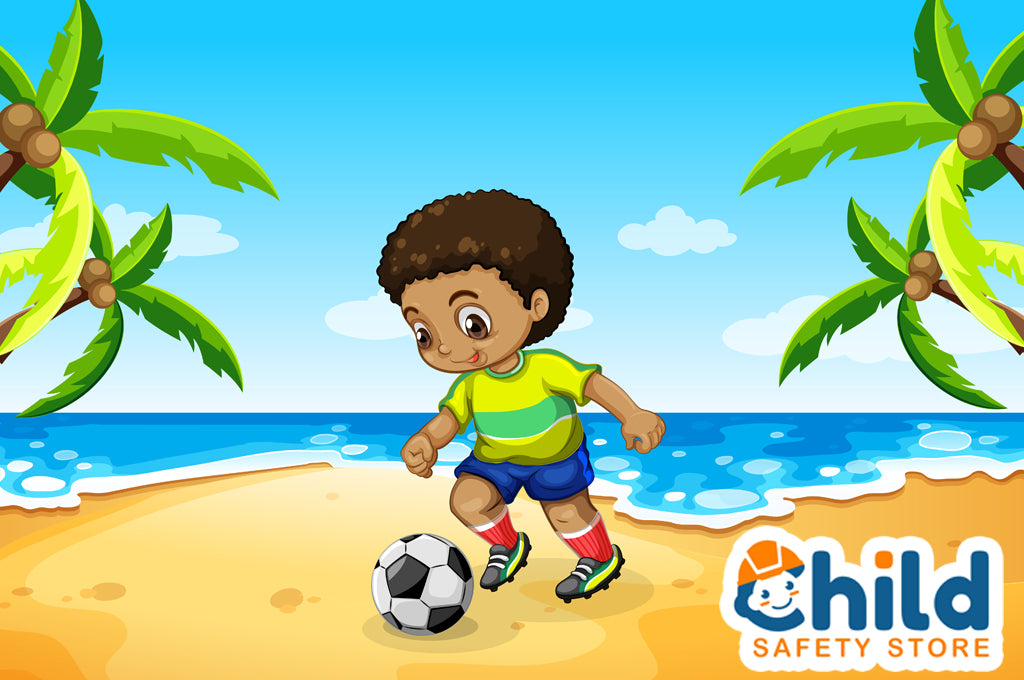
Sun Safety: Protecting Babies and Children From the Sun
While struggling to get sunscreen on your toddler may not be on your list of fun summer activities, it is certainly an important one. It is crucial that you protect your little one from the sun’s UV rays.
We've covered keeping warm during the colder months, now it's time to talk about sun safety. In this blog post, let’s take a look at how to keep babies and children safe from harmful sun exposure.
How Dangerous is a Sunburn for Children?
In the summer months, it is tempting to spend all day basking in the sunlight. However, according to the CDC, it only takes a few serious sunburns to increase your child’s risk of skin cancer later in life.
Considering that a baby’s skin is extra sensitive, these burns can occur in a short amount of time. For instance, exposure to the sun during the peak hours of 10am-2pm can result in a burn pretty quickly. Sunburns are just like any other burns: they can be painful. They make your skin red and can cause blisters, chills and headaches among other uncomfortable side effects.
Infants Under 6 Months Old
If your child is under six months old, it is recommended that you keep them out of the sun. This is the best way to keep their sensitive skin fully protected, but it doesn’t mean you shouldn’t step outside. In this case, sun safety simply means that your baby should be out of the direct sunlight. Remain in the shade and use physical barriers, such as umbrellas and canopy strollers, to shield them from harm. If shade and other protectants aren’t available, the American Academy of Pediatrics suggests using a minimal amount of sunscreen.
Sunscreen: What to Look For
Once your child is six months old, it's okay to begin using sunscreen regularly. Your child’s skin is still sensitive, so you want to take proper measures to protect them.
Here are some items to consider:
- SPF: Your sunscreen should be SPF 30-50 and water-resistant. The label should say “broad-spectrum,” which means that it protects against both UVA and UVB rays.
- Mineral vs. Chemical: Mineral sunscreens sit on the skin and repel UV rays away from the skin. These products are often gentler on sensitive skin. Alternately, chemical sunscreens transfer the UV rays into heat to be released from the skin and are more likely to irritate the skin.
- Lotion vs. Spray: While spray sunblocks are easy to apply, they often aren’t used properly, resulting in burns. On the other hand, lotions coat the skin more evenly.
Additional Tips for Sun Safety
There are many ways to actively protect your little ones from the dangerous effects of the sun.
- Apply Sunscreen Frequently: It isn’t enough to only apply sunscreen at the start of the day. It should be reapplied every two hours, and more frequently if your child is sweating or in the water. Since clouds don’t block UV rays, sunscreen should be applied any time you are outdoors.
- Dress Appropriately: Dress young children in protective clothing such as a brimmed hat and lightweight articles of clothing that cover the body.
- Spot Check: Before using a product, you’ll want to test it by applying only a small amount on your baby’s skin several days before you plan to use it. Be on the lookout for rashes and skin irritation. If your child has a reaction to it, you should discuss alternatives with your pediatrician.
- Be on the Lookout: If you notice sunburn developing, remove them from the sun immediately and apply cold compresses to the affected areas.
